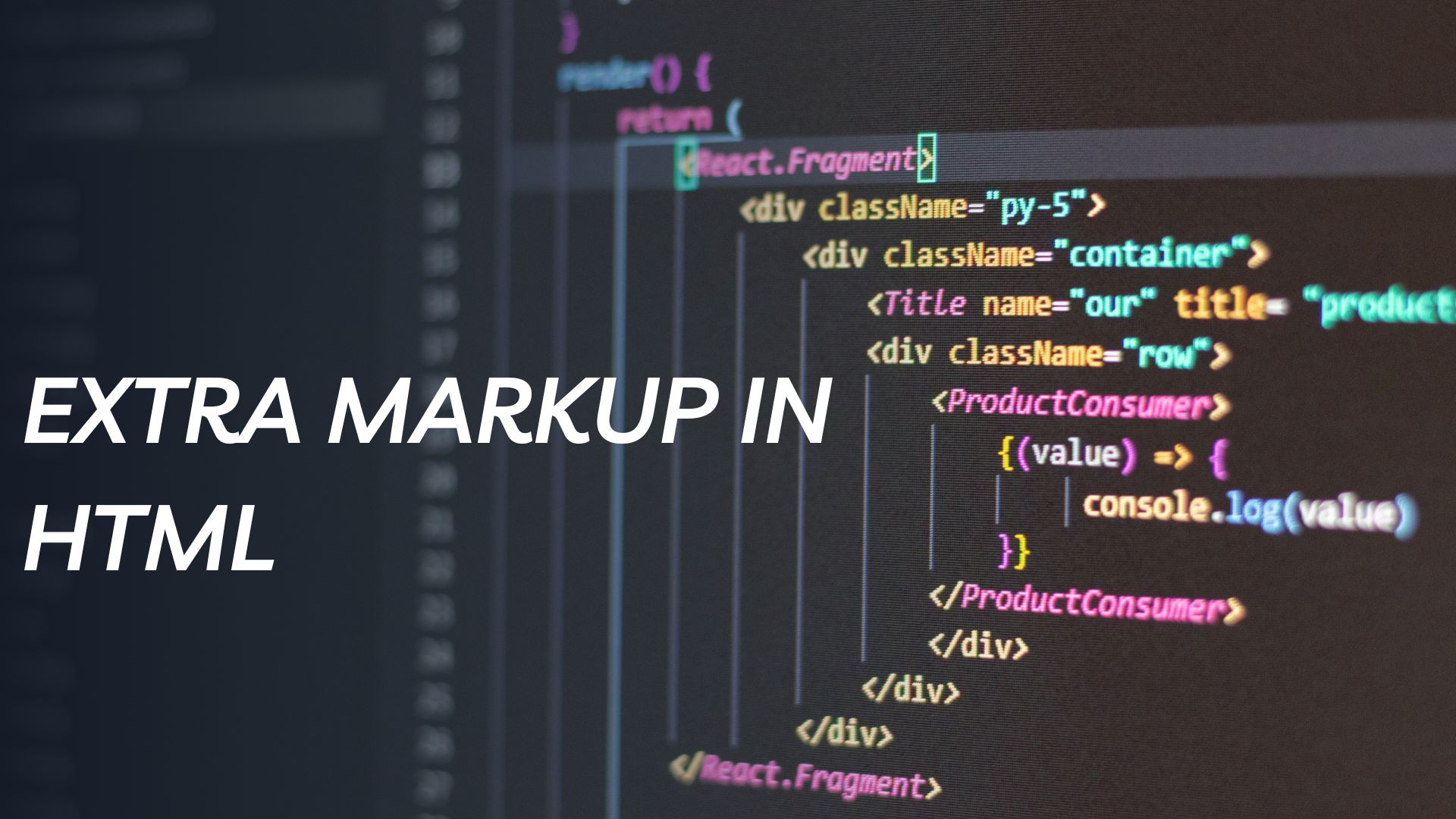“Extra markup” in HTML refers to additional elements or attributes that provide extra functionality, semantics, or structure to a webpage beyond the basic elements. These extra markup elements and attributes allow web developers to create more accessible, interactive, and well-structured content. Here are some examples of extra markup in HTML:
- Semantic Elements: HTML5 introduced several semantic elements that provide meaning and context to the content. These elements help search engines and assistive technologies better understand the page’s structure. Some common semantic elements include:
<header>: Represents the header section of a document or a section within an article.<nav>: Represents a navigation menu or links.<main>: Represents the main content of the document.<article>: Represents a self-contained piece of content, such as a blog post or news article.<section>: Represents a generic section of content.<aside>: Represents content that is tangentially related to the surrounding content.<footer>: Represents the footer section of a document or a section within an article.
<figure>and<figcaption>: The<figure>element is used to encapsulate media content, such as images, videos, or illustrations. The<figcaption>element can be used within a<figure>to provide a caption for the media.<abbr>: The<abbr>element is used to mark up abbreviations and acronyms, and you can include atitleattribute to provide the full expansion of the abbreviation.<time>: The<time>element represents a specific date and/or time. It can be useful for events, blog posts, or any content with time-related information. Thedatetimeattribute is used to provide a machine-readable format of the date/time.<details>and<summary>: The<details>element creates a disclosure widget that allows users to show or hide additional information. The<summary>element provides a visible summary or heading for the details section.<datalist>and<option>: The<datalist>element contains a list of<option>elements that can be associated with an input field. It provides suggestions to users when they start typing in the input field.<meter>: The<meter>element represents a measurement within a known range, such as disk usage, download/upload progress, etc.<progress>: The<progress>element represents the progress of a task or process, such as file uploads or form submission.<blockquote>and<q>: The<blockquote>element is used to mark up long quotations, while the<q>element is used for shorter inline quotations.
These are just a few examples of extra markup elements in HTML. Using these elements appropriately can improve the accessibility, search engine optimization, and overall structure of your webpages. Additionally, when combined with CSS and JavaScript, extra markup elements can enhance the interactivity and user experience of your website.
